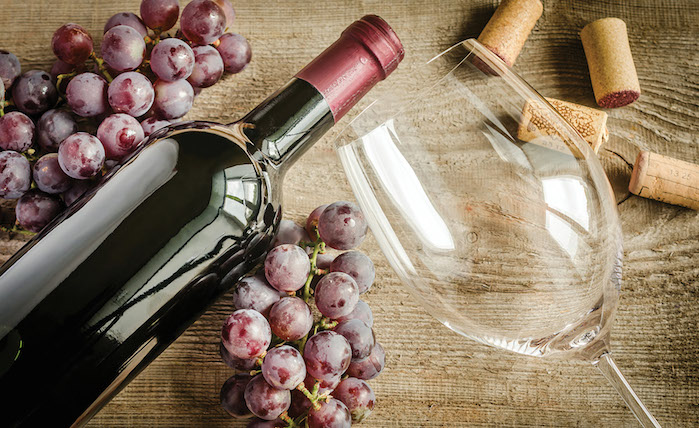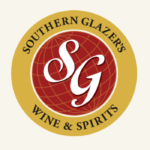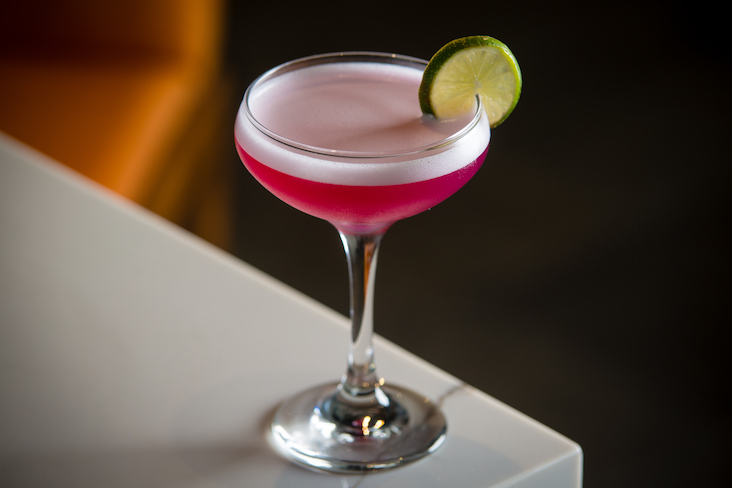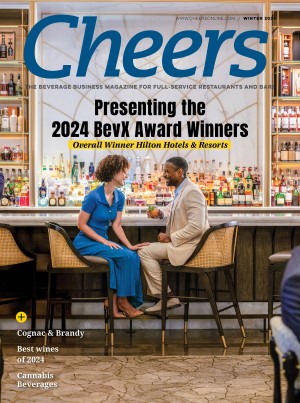What’s in a wine label?
Loads of information. There’s a brand name or producer, of course, and a geographic description of origin. A year, if the wine is vintage-dated, and perhaps the name of a grape. And the percentage of alcohol by volume – often in type so small that mere mortals can barely read it.
Then there are the optional terms, like “estate bottled” or the name of a specific vineyard. These give consumers additional information about what’s in the bottle, but do those buyers even understand or care?
First, some definitions. “Estate bottled,” according to federal regulations, means that the winery grew all the grapes on land it owns or controls and that the winery crushed, fermented, aged and bottled the wine in a continuous process on its premises. Both the winery and the vineyard must be in the viticultural area (such as “Napa Valley”) stated on the label. (The term “estate grown” has the same definition, according to a government spokesman).
When a label includes the name of a vineyard, federal regulations require that at least 95 percent of the grapes used be grown in the named vineyard. Such wines are often called “single vineyard” or “vineyard designate” wines.
Winery representatives – owners, winemakers, marketing professionals – don’t necessarily agree on how well understood the terms are, but they use them for a variety of reasons. And some research indicates that the presence of “estate bottled” on a label is important to members of the trade who sell wine.
Christian Miller of Full Glass Research said members of the trade – retailers, on-premise and wholesalers – were asked in a Wine Opinions survey what factors were important in choosing and selling a $20-$40 Cabernet Sauvignon. “The factors fell into three rough tiers,” he says; an estate-bottled designation was in the second most important tier. The designation, he added, “clearly set the wine apart from brands” because an estate-bottled wine is more limited.
Miller said he hasn’t done any specific research on the value of a vineyard designation, but his “gut-level reaction” is that including the name of a vineyard “is a clue that the wine is more upscale, prestigious or higher quality.” This is especially true when the vineyard is well-known. He cautioned, however, that this applies only to frequent or high-end consumers, not to all wine drinkers.
The concept of estate-bottled wines is similar to the French practices known as chateau or domaine bottling (“mise en bouteille au chateau/domaine”). Labels on Old World wines also frequently carry the name of a specific place or vineyard. Think Clos Vougeot or Bonnes Mares in France’s Burgundy region, or Bernkasteler Doctor in Germany’s Mosel.
Selling the Story
Winery representatives say that using “estate bottled” or a vineyard name helps to tell a wine’s origin story. Nevertheless – and in spite of research like Miller’s – a lot of wineries whose wines are indeed estate bottled don’t indicate that on the front label.
Washington state giant Chateau Ste. Michelle, for example, doesn’t use the term on the front label, although it’s mentioned on the back, when applicable, according to vice president of marketing Jan Barnes. The wines at Chehalem in Oregon’s Willamette Valley are all estate bottled, but that winery also doesn’t use the term on the front; it’s included in a description on the back label, says founder and owner Harry Peterson-Nedry. “People should care about that, even though we find that people don’t notice,” he said. Then he added, “We should be emphasizing more and more that we’re growing the grapes.”
Foley Family Wines uses an estate designation on its wines from Chalk Hill and Chalone – California wineries that dominate their American Viticultural Areas and lent their names to those areas. At Chalk Hill, for example, “We’ve always talked about the origin. That’s always been a big part of the story,” says Foley director of marketing Denise Roach. At other wineries, she says, the company leaves it to the hospitality staffs at the respective tasting rooms to tell the story to customers.
But there are also plenty of U.S. wineries that use estate bottled. Far Niente president and partner Larry Maguire, for example, thinks his customers see the term as a “guarantee of quality” from the Napa Valley winery. Plus, he joked, using it “prevents us from making ill-conceived decisions in the fog of war” because of the restrictions it carries.
Tablas Creek Vineyard in Paso Robles, California, is another winery that puts a big emphasis on the estate designation. Labels say “Grown & Bottled on the Estate,” which really spells it out, as opposed to the more common “estate bottled” designation. “For a lot of consumers, it doesn’t mean anything,” says Jason Haas, general manager of his family’s winery. But more knowledgeable wine drinkers understand that “we had control of this product from start to finish. And we’re proud of that fact.”
For years, all of the Tablas Creek bottlings were from the estate, but business considerations led to the addition in 2010 of a less expensive line of wines made from purchased grapes called Patelin de Tablas. Even the Patelin wines have an origin story of sorts. Haas’ father, Robert, and the Perrin family of Chateau de Beaucastel in France’s Chateauneuf-du-Pape region bought the Tablas property in 1989 and imported grapevine cuttings from France. Once the cuttings cleared quarantine, the partners started propagating them in their own vine nursery in Paso Robles. They used those vines to plant the Tablas Creek estate and also shared them with other wineries. The vineyards used for Patelin, which are listed on the back label, are planted with the descendants of those original vines.
“That origin story is kind of baked into the Tablas Creek brand,” Haas said. He added that he considers all the estate wines to be single-vineyard, too: Tablas Creek Vineyard.
Estate or Single-Vineyard?
As for single-vineyard wines, they seem to be everywhere these days. In many cases, they’re made in quantities so small that they’re sold mostly (or entirely) direct to consumers and to wine clubs. Testarossa Winery in Los Gatos, California, produces vineyard-designate wines, mostly Pinot Noir and Chardonnay, from 17 vineyards, and about 85 percent of the production is sold direct to consumers. The winery and tasting room are in Silicon Valley, where people “want something unique and special,” says Rob Jensen, who owns Testarossa with his wife, Diana. So Testarossa rolls out a new single-vineyard wine about every six weeks, which encourages customers to make frequent visits to the tasting room. This approach has helped the winery build its wine club to more than 4,000 members.
Testarossa goes to extremes to promote the birthplaces of its wines, offering vineyard tours to its club members. Jensen said his customers love to “kick the dirt, see the vines, feel the fog roll in.”
A common criticism is that single-vineyard wines are more about marketing than distinctiveness. In many cases, such wines can taste so similar to one another that it’s tempting to wonder: What’s the point? (Besides, perhaps, the ability to charge more for such wines.)
Jensen defends the uniqueness of Testarossa’s single-vineyard bottlings. “We regularly do side-by-side tastings of our single-vineyard wines, and even within the same appellation, the wines are clearly distinct,” he says. In some cases, the vineyards “share a fence line,” he adds. Jensen noted that, in addition to the soil, factors such as clones, rootstocks, vine age and how a vineyard is managed contribute to the end result.
Chehalem’s Peterson-Nedry acknowledged that some producers may have jumped the gun “years and years ago” in vineyard-designating their wines, particularly Pinot Noirs. But he said that as his area’s vineyards have matured, they reflect more “terroir nuances,” which makes them more interesting to customers who care about those differences. And as wineries “seek to satisfy wine clubs, I think there’s a willingness now to add some SKUs.”
Far Niente’s sister Napa Valley winery, Nickel & Nickel, produces all single-vineyard wines – 23 of them, mostly Cabernet Sauvignon. “There’s this coolness and sense of discovery” when consumers taste a range of the wines, Maguire says. “Even a novice can tell them apart, and that excites them.”
The proliferation of U.S. single-vineyard wines isn’t just a West Coast phenomenon. Fox Run in New York’s Finger Lakes region vineyard-designates some of its Rieslings. The wines come from specific blocs with distinctive soil types in the winery’s estate vineyard. Fox Run sales manager Dan Mitchell says the back labels explain the differences. “It helps write the story for the wines, and consumers like that,” he says.
Chateau Ste. Michelle has bottled single-vineyard wines since the early 1990s. To help establish the “pedigree” for one of them, Cold Creek Vineyard – one of the state’s oldest vineyards — the winery sells some of the grapes to other prominent winemakers, who themselves vineyard-designate the wines.
Ste. Michelle continues the single-vineyard theme at Stag’s Leap Wine Cellars in the Napa Valley, which it owns with Tuscany’s Piero Antinori and which makes celebrated cabernets from the SLV and Fay vineyards, as well as with the recently acquired Patz & Hall, a Napa producer of a number of Pinot Noirs and Chardonnays.
Priced at a Premium
Although it varies from winery to winery, estate and single-vineyard wines usually command higher prices. At Ste. Michelle, for example, the Columbia Valley wines retail for $12-$15, while the single-vineyard Cabernets are $30-$40. At Chehalem, the Three Vineyard Pinot Noir, which Peterson-Nedry describes as the entry-level wine, is $30; the four single-vineyard Pinots are $50.
Testarossa’s single-vineyard wines also command a premium. Pinot Noirs with a broader appellation like Santa Lucia Highlands or Sta. Rita Hills, for example, are priced at $49; most of the single-vineyard Pinots are $65. Nearly all the single-vineyard wines are sold direct to consumers, mostly to the wine club.
Since all the Nickel & Nickel wines are single-vineyard bottlings, there’s no comparison to be made. But the Cabernets, for example, are $115 to $160; the price differences are based on a combination of production size and “a genuine following,” Maguire said. A few of the really limited wines are sold direct to consumers.
That direct-to-consumer aspect is common for single-vineyard wines. That also makes them more attractive to the winery, which makes more money than it would with a wine that goes to distribution.
It’s harder to assess the price premium that an estate wine commands, especially when a winery’s products are all estate-bottled. But Tablas Creek provides an illustration. The Patelin de Tablas wines are $25, while the estate wines are more expensive: The Cotes de Tablas red blend is $35, for example, while the flagship Esprit de Tablas red is $60.
Ultimately, Maguire says, pricing is really about the “strength of the winery brand – and your nerve.”
A Northern California resident, Laurie Daniel has written about wine for more than 20 years. Her wine column appears in several California newspapers, and her articles have appeared in magazines such as Wines & Vines, Food & Wine, Wine Country Living, Drinks and the Wine Enthusiast.











[…] Aug 14, 2017 – Loads of information. There’s a brand name or producer, of course, and a geographic description of origin. A year, if the wine is vintage-dated, and perhaps the name of a grape. And the percentage of alcohol by volume – often in type so small that mere mortals can barely read it. Full article […]